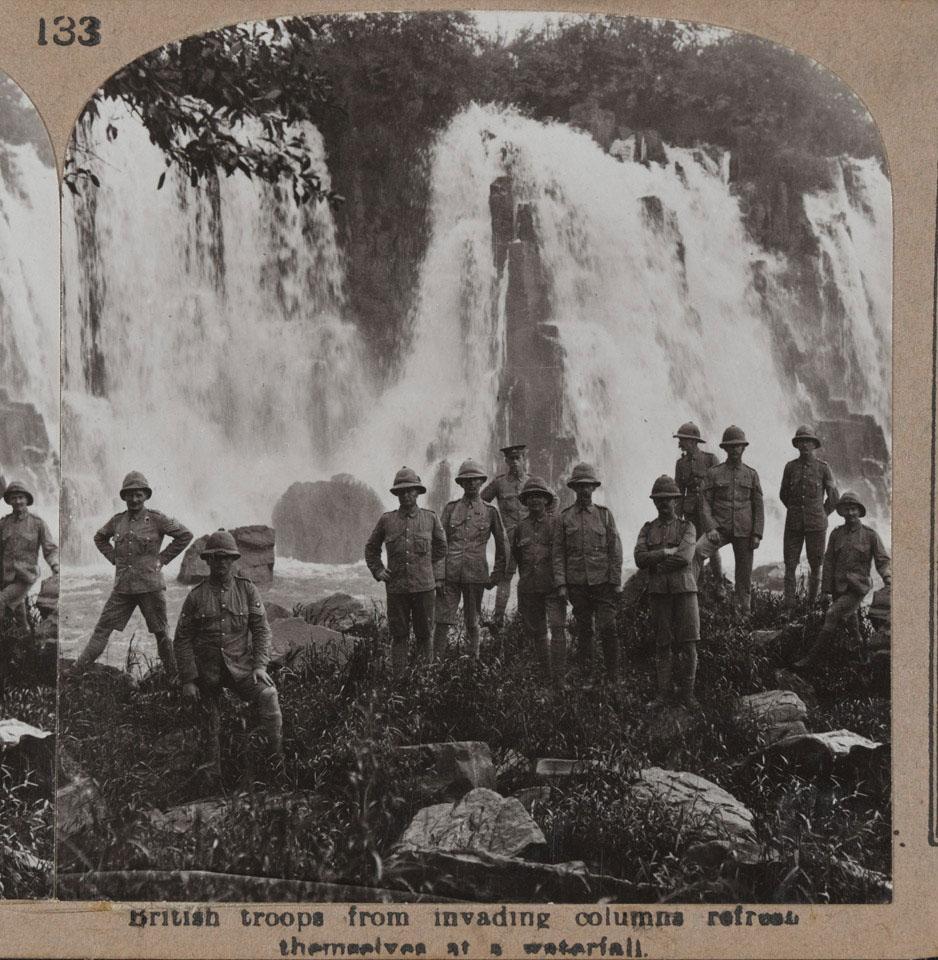
Online Collection
« Prev - 1 of 1 results - Next »
'British troops from invading columns refresh themselves at a waterfall', West Africa, 1915 (c)
Stereoscopic photograph, World War One, West Africa, 1915 (c).
Germany's West African colonies consisted of Togoland (Togo) and Kamerun (Cameroon). They were poorly defended and surrounded on all sides by French and British colonies. Togoland was conquered in August 1914 by forces from the British Gold Coast (Ghana). Kamerun had a garrison of about 1,000 German soldiers supported by about 3,000 Africans. Three British columns attacked from Nigeria, but all three were defeated by a combination of rough terrain and German ambushes.
The French then attacked south from Chad and captured Kusseri. Early in September, a Belgian-French force (from the Belgian Congo) captured Limbe on the coast. With the aid of four British and French cruisers acting as mobile artillery, this force then captured the colonial capital of Douala on 27 September 1914. The Belgian-French troops then followed the German-built railroad inland, beating off counter-attacks along the way. By November 1914, Yaounde was captured and most of the surviving Germans had either retreated into neutral Spanish Guinea or to the interior where they held out in posts at Jaunde, Garua, Banjo, Jokoo and Fumban. The Allies gradually captured these and the last German fort surrendered in February 1916.
From a collection of 96 stereoscopic photographs entitled 'The Great War'.
NAM Accession Number
NAM. 1972-08-67-2-133
Copyright/Ownership
National Army Museum, Out of Copyright
Location
National Army Museum, Study collection
Object URL
https://collection.nam.ac.uk/detail.php?acc=1972-08-67-2-133

